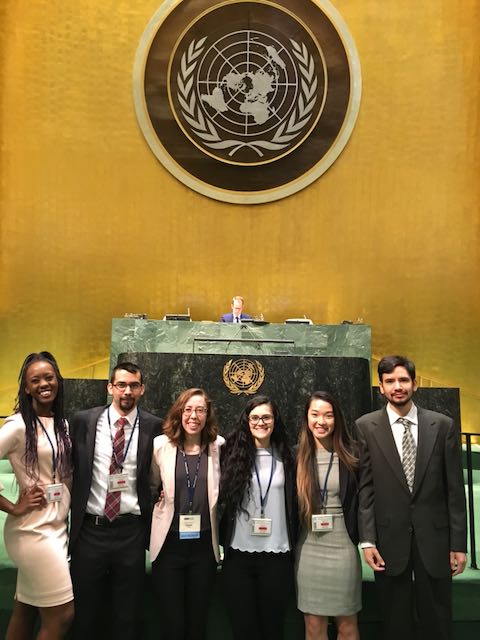Wichita Area Model United Nations
Blurb about WAMUN
Conference Information
January #th 2025 at #AM - #PM
Fee information
Parking: You can find an interactive campus map here and vistor parking information here
Schedule:
Food Options: There are many on campus food options from our Shocker Dinning Hall, to restruaunts
in the Rhatigan Student Center like Panda Express, Freddys Frozen Custard and steakburgers,
and Chick- Fil-A.
1. Prevention of an arms race in outer space
2. Protection of migrants
Topic Background Guides are available.
Additional Web links for research
For more information, questions, or concers you can contact Dr. Alexandra Middlewood
- UN member state websites - country specific information
-
UN News Center - headline news on variety of global topics
Consensus building involves finding the middle ground when difficult issues are being debated, and then bringing in more members to support that compromise position so that a resolution has a maximum level of support from member states.
During the Cold War, the UN was very divided and it was difficult for resolutions to pass with more than 60-70% support of the members. Following the end of the Cold War, the UN has increasingly tried to work toward consensus, where many resolutions are adopted unanimously by all voting members. Even without the divisions of the Cold War, this is still difficult to achieve. Delegates must engage in extensive dialogue with each other regarding the specific interests of their countries and their preferences regarding the language in the draft resolutions under discussion.
It takes a particularly skilled diplomat to identify a solution that is agreable to a core set of delegates and then bring others into that group. It often involves a degree of compromise. Delegates should not only seek to clearly articulate their own preferences, they should also listen carefully to other delegates to see where their interests overlap, and where there might be room for compromise.
| Point or Motion | Second? | Debatable | Majority? | Description |
| Point of Information | No | No | No | This point is made if a delegate has a question regarding rules or other concerns, or needs clarification from the Chair. |
| Suspension of the meeting |
Yes |
Yes | Simple majority | This motion is made when delegates want to break from formal session in order to begin writing resolutions, or to seek support from other delegates for their draft resolutions. |
| Close Debate | Yes | Yes | 2/3's majority | This motion is made when delegates have completed their work on their resolutions and are ready to put them to a formal vote. Only four resolutions will be approved by the Chair for a formal vote. |
| Move topic to the floor | Yes | Yes | Simple majority | This motion is made in order to begin discussion on one of the two topic areas. Delegates get to decide which topic they want to address first. |
| Establish a Speaker's list | Yes | Yes | Simple majority | This motion is made if delegates want to establish a list of speakers. Delegates will be invited put their names on the list so they can address the body when it is their turn. If there is no list, delegates will be called on as they raise their placards. |
| Close Speaker's list | Yes | Yes | Simple majority | This motion is made if delegates would prefer to be called on as they raise their placards instead of following the order on an established Speaker's List. |
| Limit Speaker's time | Yes | Yes | Simple majority | This motion allows delegates to limit how long each speaker is allowed to speak. (Usual limits are between 1 – 3 minutes). This motion can be made multiple times if a different time limit is desired. |
* All motions are debatable and require a second before they can be voted on by the
body. When a motion is Debatable, it means that the Chair will take one speaker in
favor of the motion and one speaker against the motion. Each speaker will briefly
state why the motion should be supported by the body or rejected by the body.
* A simple majority is considered 50% + 1. If a vote is tied, the motion fails.


